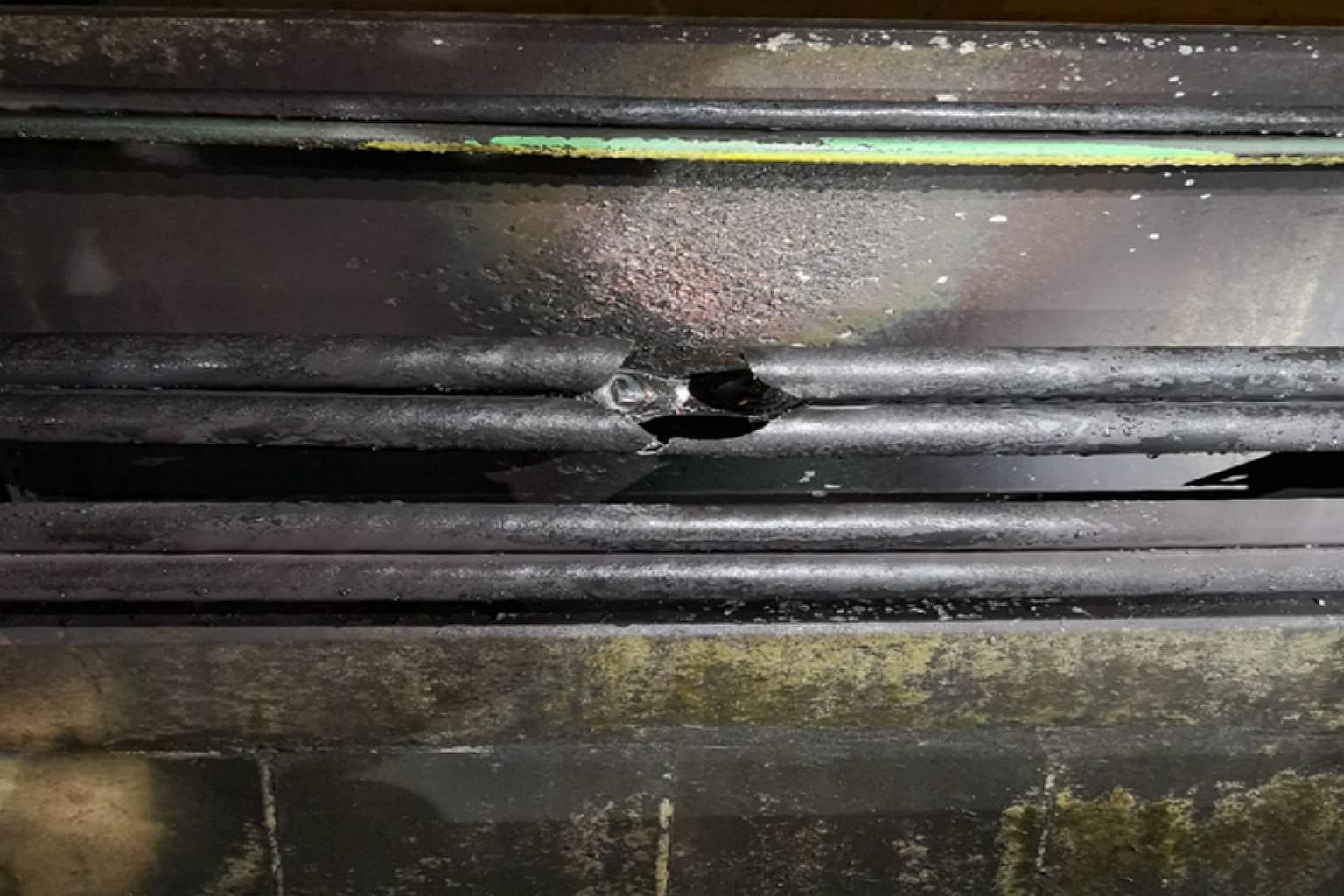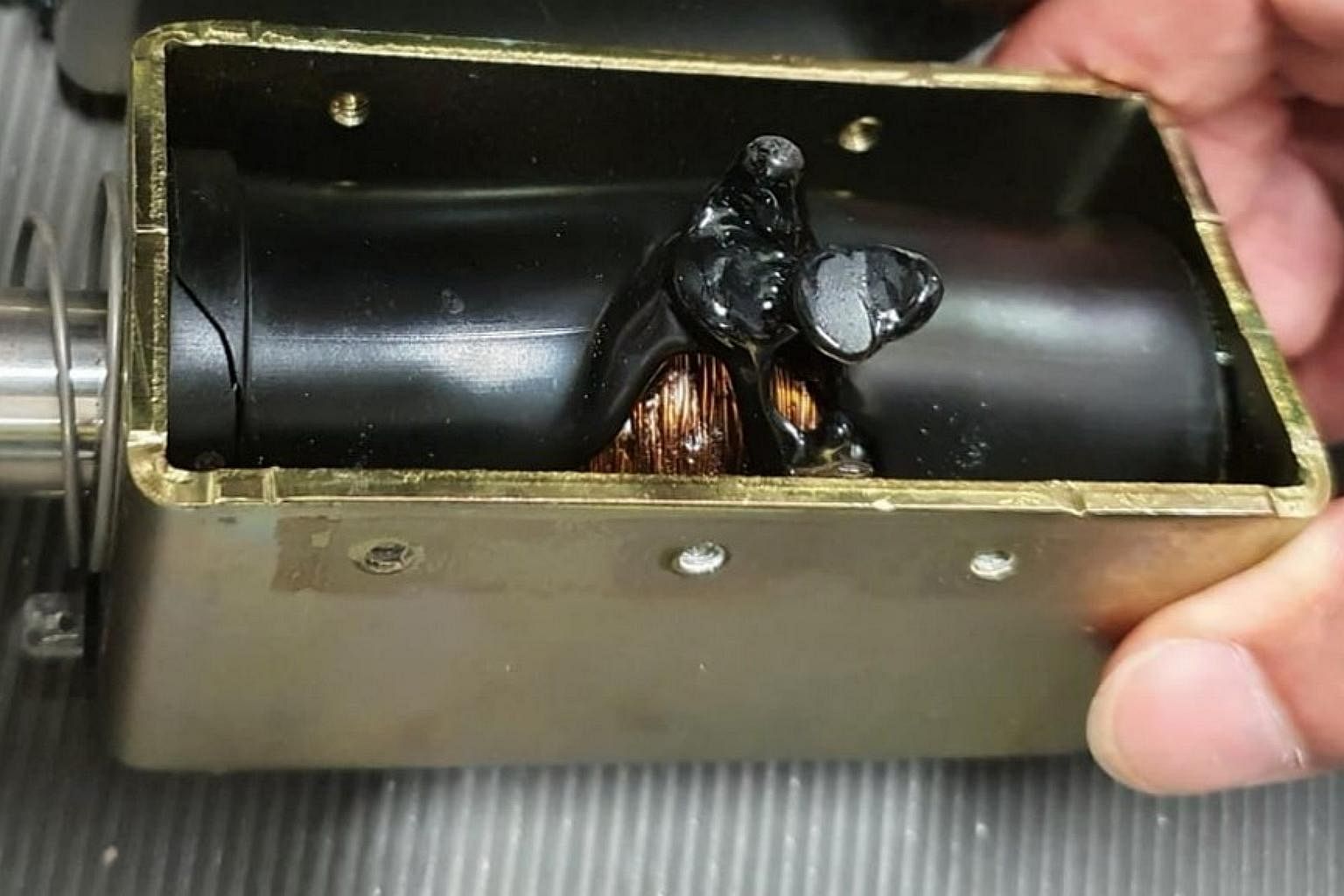SINGAPORE - When a power fault first struck the North-South and East-West lines on Oct 14, SMRT's first focus was to avoid having to evacuate passengers on stalled trains, said its chief executive Neo Kian Hong on Wednesday (Oct 28).
That was why the operator decided to draw power from an alternative substation in Buona Vista, in a bid to restore service along the affected stations more quickly.
But two of its employees - a supervisor and a staff member - misread equipment at the substation and thought that the power fault in Tuas had been isolated when it had not.
The failure to isolate the fault before drawing power caused a voltage dip at the substation, which powers the Circle Line (CCL). This caused a power trip and affected service on the CCL.
The two have been suspended, and will have to undergo re-training and re-certification before they can resume their duties, said Mr Neo at a media briefing.
He also said that SMRT took "a lot of safety precautions" when it decided that it had to evacuate passengers from the stalled trains, to maintain the safety and well-being of commuters on board.
These included suspending detrainment for one of the trains near Bukit Batok at 8.44pm due to rain and lightning risk.
The train, which was the last to be cleared of passengers, was emptied only at 9.43pm, two hours and 45 minutes after the fault began.
The Land Transport Authority (LTA) on Wednesday said passengers had to be detrained from 15 stalled trains - three on the Circle Line and 12 on the North-South and East-West lines.
Detrainment was completed within 20 minutes on the Circle Line, but took more than an hour for those on the North-South and East-West lines.
In a report released on Wednesday, the LTA said it had received feedback that more updates should be provided on the situation leading up to the detrainment, "for better awareness and preparedness".
SMRT will continue to improve its communications during disruptions, and arrange for its staff to provide commuters in stalled trains with more updates, the LTA said.
It noted that regular bus services plying the affected stations were made free immediately, and 120 shuttle buses were mobilised to ferry commuters.
"There were periods of crowd congestion at the bus points of the affected stations initially and later at the stations where trains turned around," the LTA said.

Investigations conducted later that night found that power cables located around 500m from Tuas Link station along the Tuas West Extension were burnt through.
There were short circuits between three cables on the upper layer of the two-layer power cable network, which led to a high fault current burning through the cables.

In addition, a trip coil - a component of a nearby circuit breaker which should have kicked in to isolate the fault - was found to have melted. This caused the circuit breaker to fail.
The LTA said repair works on the faulty power cables between Tuas Link and Tuas West Road stations were completed over two nights, on Oct 16 and 17.
The faulty trip coil was replaced on the night of the incident itself.

SMRT checked all trip coils along the Tuas West Extension as a precaution, and found two other trip coils that "exhibited inconsistent performance that could result in a similar failure".
French firm Alstom - which supplied the power system - is conducting forensic investigations on the faulty trip coils, the LTA said.
The report also revealed that the Tuas West Extension had experienced similar cable faults since it began operations in May 2017.
Two cable faults occurred in 2018, and two more occurred this year, in January and June.
The faults all occurred at the upper layer of the cables, along different stretches along the MRT extension line. Train services were not affected because the circuit breakers kicked in to isolate the faulty cables, the LTA said.
After the fault in June, Alstom had agreed to replace all upper layer power cables with cables that have tougher insulation. The replacement was scheduled to start this month.
It had also agreed to a 20-year warranty extension for the lower layer cables.
Following the Oct 14 disruption, Alstom also agreed to replace all the lower layer cables. In all, it will replace about 150km of cables along the Tuas West Extension by the end of next year, at its own cost.


